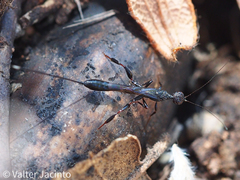Hummingbird hawk-moth
Macroglossum stellatarum
Macroglossum stellatarum, commonly known as the Hummingbird Hawk-moth, is a fascinating member of the family Sphingidae, often observed in the Comunidad Valenciana. Its resemblance to a hummingbird is remarkable as it hovers from flower to flower, feeding on nectar with its long, proboscis while producing a humming sound with its rapidly beating wings.
- Appearance: This moth is characterized by its robust body, a wingspan ranging from 40 to 50 millimeters, and muted coloration with grey and brown shades. Its forewings are mottled with black lines, while the hindwings are orange.
- Behavior: Macroglossum stellatarum is diurnal, meaning it is typically active during daylight hours, unlike many other moths. It displays agility and speed while feeding and can travel long distances.
- Habitat: It is often found in gardens, meadows, and countryside areas rich with flowers. In the Comunidad Valenciana, it thrives in regions with abundant flora, making it a common sight across various locales.
- Lifecycle: This species undergoes a complete metamorphosis with four life stages: egg, larva (caterpillar), pupa, and adult. The caterpillar initially feeds on plants like bedstraw, showcasing a range of green hues during its larval phase.
- Local Name: Known in some parts of Spain as Esfinge colibrí due to its unique flight pattern and feeding style resembling that of a hummingbird.
The presence of Macroglossum stellatarum in the Comunidad Valenciana serves as an indicator of the biodiversity richness in this region, offering both residents and visitors an opportunity to witness one of nature's remarkable mimics.







